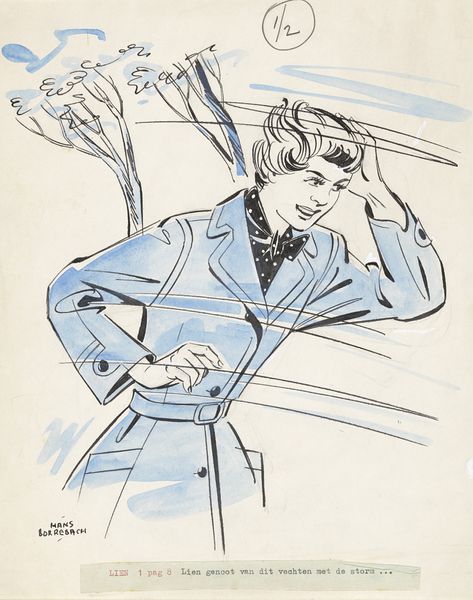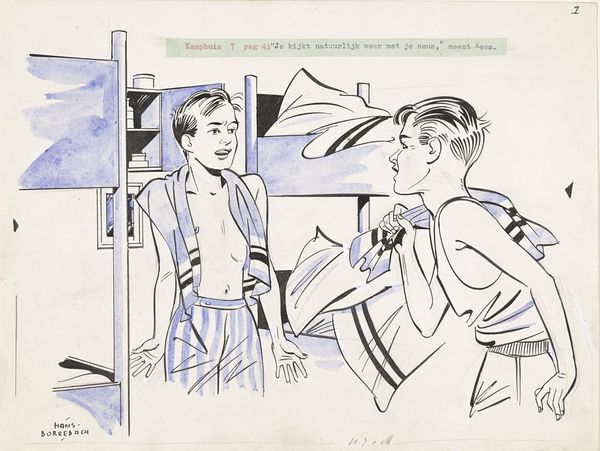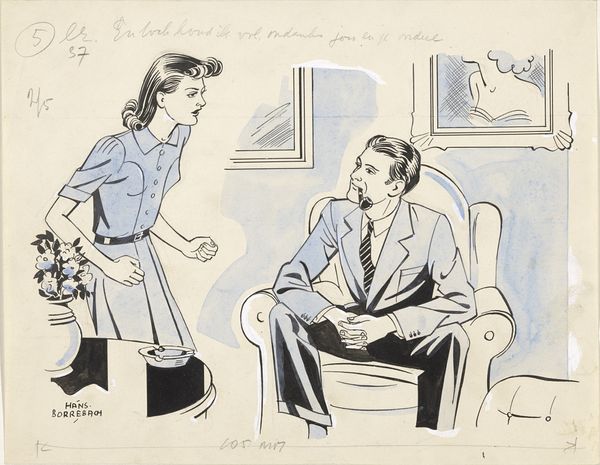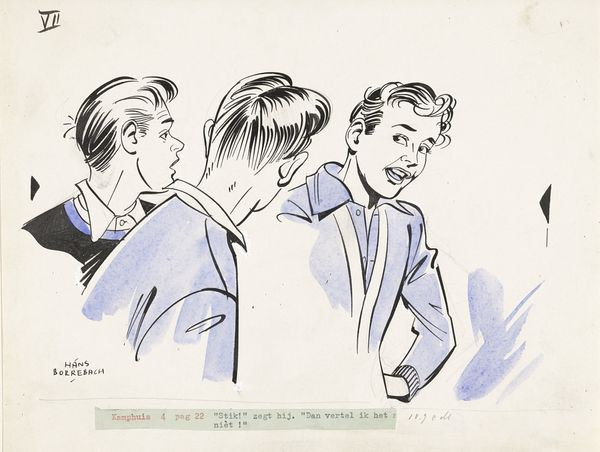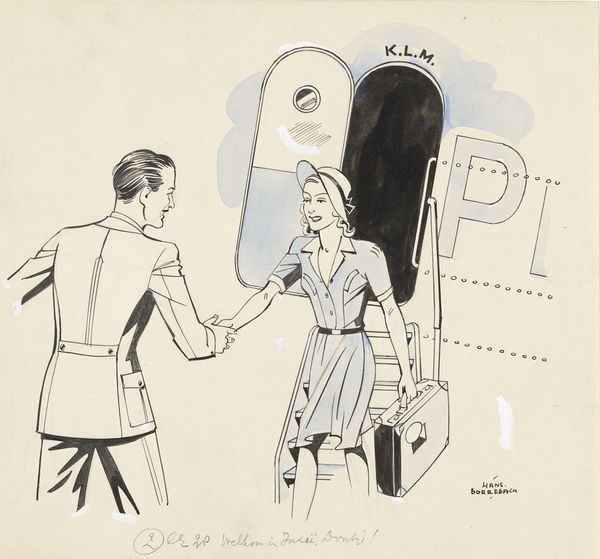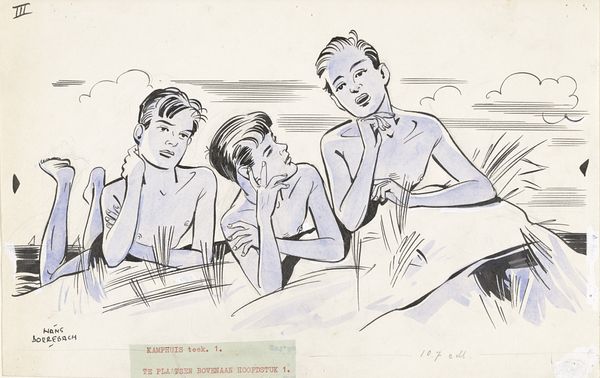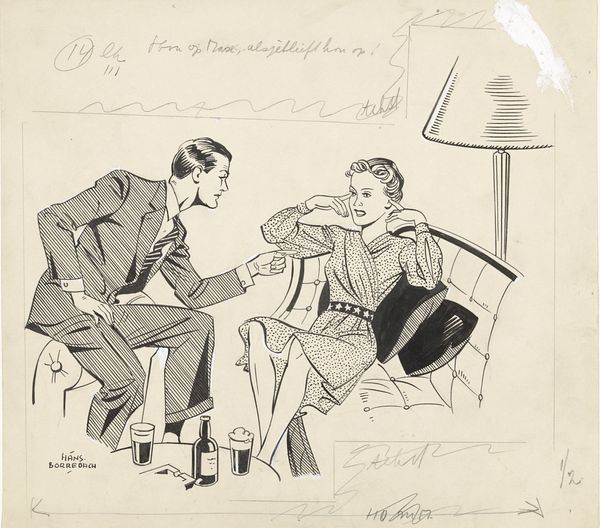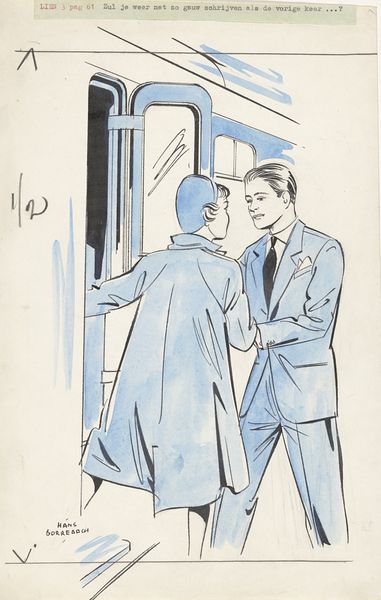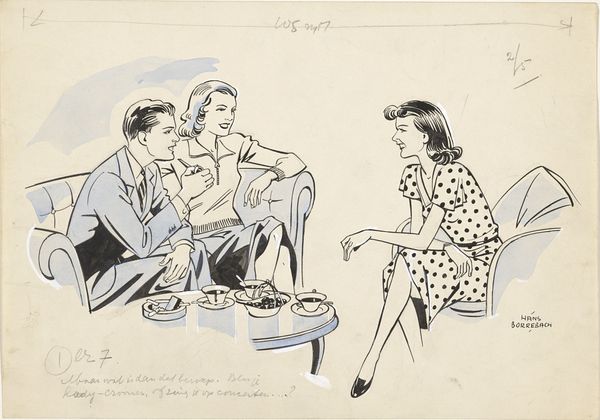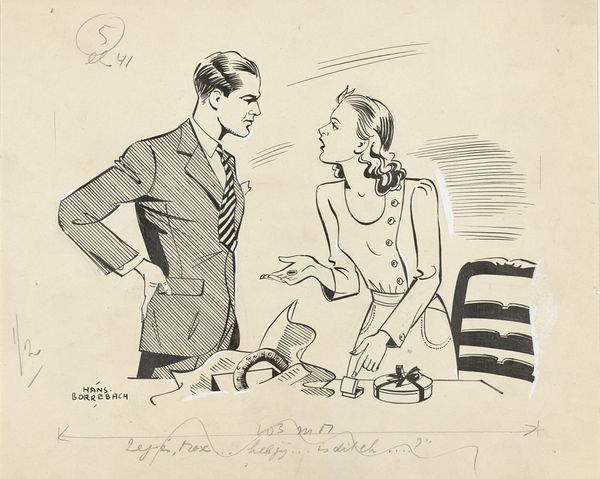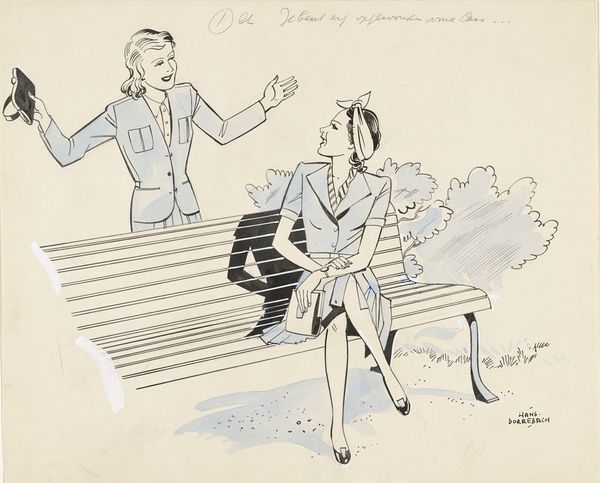
drawing, paper, ink
#
portrait
#
drawing
#
imaginative character sketch
#
light pencil work
#
quirky sketch
#
cartoon sketch
#
figuration
#
paper
#
personal sketchbook
#
ink
#
idea generation sketch
#
ink drawing experimentation
#
sketchbook drawing
#
genre-painting
#
storyboard and sketchbook work
#
sketchbook art
#
modernism
Dimensions: height 249 mm, width 202 mm
Copyright: Rijks Museum: Open Domain
Editor: So, this is "Man wil Lien een brief laten zien," or "Man wants to show Lien a letter," by Hans Borrebach, created before 1957. It seems to be a pen and ink drawing with some watercolor washes on paper. I'm really drawn to the starkness of the line work and how it creates a sort of casual but tense atmosphere. What stands out to you about the composition and the artist's technique here? Curator: The composition relies on the stark contrast between line and form, as you noted. Observe how Borrebach employs a seemingly effortless application of line to define the figures. There’s a purposeful asymmetry here; the male figure is cropped, implying action, while the woman is presented frontally, in full view. The washes are strategic, drawing our eyes to specific areas of interest: her top and skirt and the papers in his hands. Does this visual weighting lead you to any interpretations regarding the narrative? Editor: Well, the use of the washes on Lien perhaps puts the focus on her... maybe making her the center of the story even if the man is doing something, *showing* her the letter? Is it fair to suggest the artist employed compositional techniques to highlight one subject versus the other? Curator: Precisely! The artist emphasizes the woman's presence through colour and form, despite the man initiating the action. Note also the negative space. It's not merely empty; it functions as a structural element that guides the eye. We can read into this strategic arrangement a sort of psychological game being staged here, all rendered in the pure form of the drawing. It’s about creating that emotional tension, primarily, by strictly deploying only structural elements, independent of cultural context, per se. What’s your read on the text at the bottom of the frame? Editor: That the text below might have served a very functional purpose in the production and has subsequently become integral to the reading of this drawing? It offers some potential dialogue... Maybe we should both consider how line and form speak louder than text here.
Comments
No comments
Be the first to comment and join the conversation on the ultimate creative platform.
